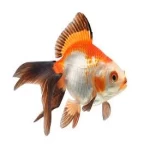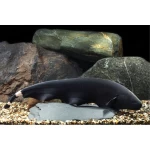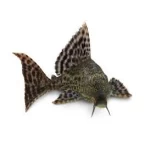Arowana
The Arowana fish is one of the most majestic and expensive freshwater fish, known for its beautiful appearance, fascinating behavior, and symbolic significance in certain cultures. Often called the “dragon fish,” it is considered a symbol of good luck, wealth, and success in Asian traditions. Arowanas are native to rivers and lakes in tropical regions such as the Amazon, Southeast Asia, and Australia.
General Characteristics of Arowana Fish
• Scientific Name: Family Osteoglossidae (various species like Osteoglossum bicirrhosum and Scleropages formosus).
• Common Names: Arowana, dragon fish, Asian Arowana, silver Arowana.
• Size: Depending on the species, it can grow up to 90–120 cm (3–4 feet).
• Lifespan: 10 to 20 years under proper conditions (sometimes even longer).
• Appearance: Long and slender body, large and shiny scales, an upward-facing mouth, and two long barbels near the mouth.
Popular Arowana Species
1. Asian Arowana (Scleropages formosus)
• The most luxurious and expensive species.
• Available in various colors: red, gold, green, and purple.
• Its trade is restricted in some countries due to its endangered status.
2. Silver Arowana (Osteoglossum bicirrhosum)
• The most popular species for aquarium enthusiasts.
• Shiny silver color and more affordable compared to the Asian Arowana.
3. Black Arowana (Osteoglossum ferreirai)
• Darker in color and rarer than the silver Arowana.
4. Australian Arowana (Scleropages jardinii and Scleropages leichardti):
• Distinctive coloration with unique patterns on the scales.
Behavior and Temperament
• Nature: Generally peaceful but can be aggressive towards smaller fish or other Arowanas.
• Swimming: Mostly swims near the water surface and requires a tightly sealed lid due to its ability to jump.
• Social Compatibility: Best kept alone or with large, peaceful fish.
Care Requirements
1. Tank Size
• At least 1000 liters (265 gallons) for an adult Arowana.
• The tank should have enough length and width for free swimming.
2. Water Conditions
• Temperature: 24–30°C (75–86°F).
• pH Level: 6.0–7.5 (slightly acidic to neutral).
• Water Hardness: Soft to medium (5–15 dGH).
3. Tank Setup
• Substrate: Soft sand or fine gravel.
• Decorations: Rocks and driftwood to create hiding spots.
• Plants: Hardy plants like Anubias or Java Fern.
4. Diet
• Carnivorous; feeds on small fish, shrimp, insects, worms, and specialized Arowana food.
• Avoid excessive feeding of fatty foods.
5. Tank Mates
• Compatible with large, peaceful fish like big cichlids, catfish, and bottom-dwellers.
• Avoid keeping them with small or highly aggressive fish.
Important Considerations
• Arowanas are sensitive to sudden changes in water quality, so regular water changes and a strong filtration system are essential.
• Due to their jumping ability, a secure tank lid is a must.
• The Asian Arowana is protected under CITES regulations due to its endangered status, requiring permits for legal trade.
If you have any questions about Arowana care or behavior, I’d be happy to help!








allsmxmsc
7 months ago
lsacmn ad;nc
Submit